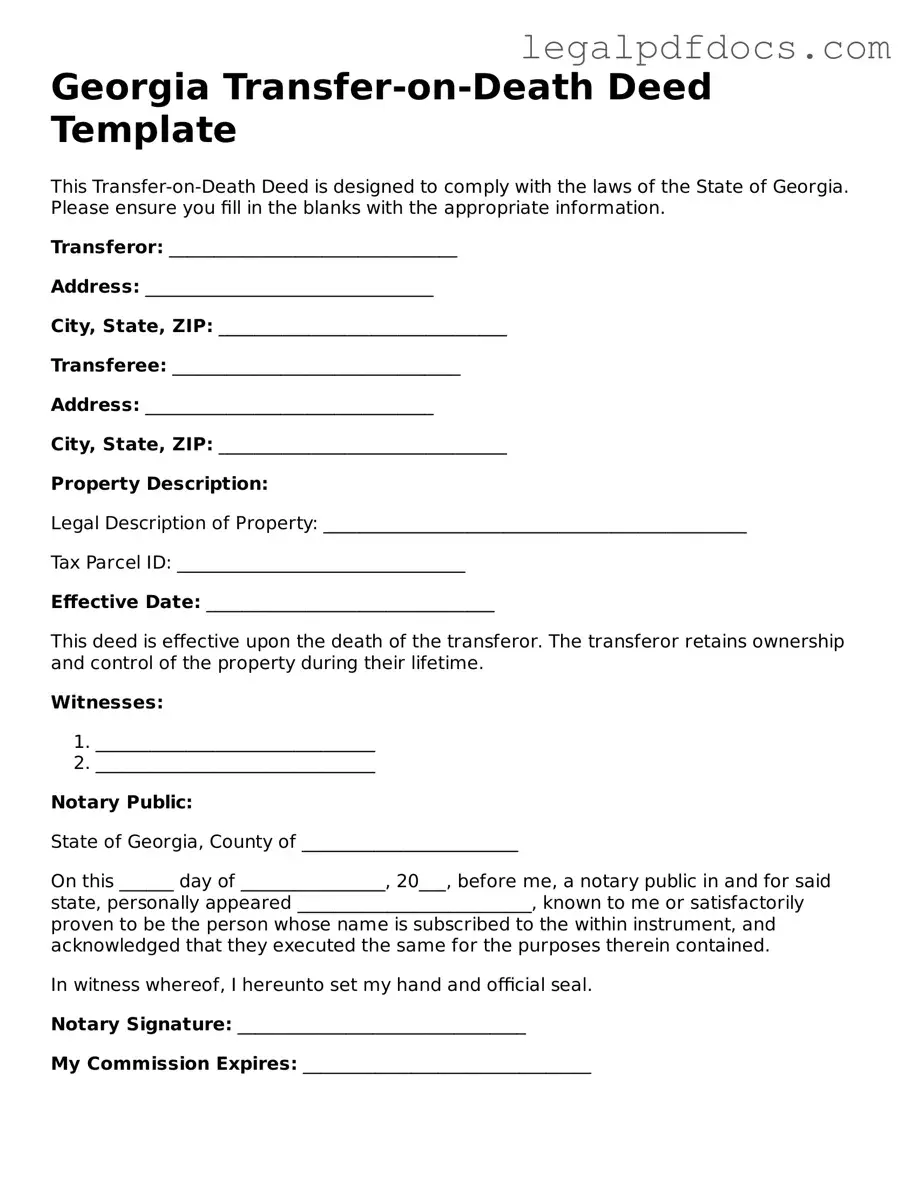Official Transfer-on-Death Deed Form for Georgia
The Georgia Transfer-on-Death Deed form allows property owners to designate beneficiaries who will receive their real estate upon their death, bypassing the probate process. This legal instrument provides a straightforward way to transfer ownership, ensuring that the property passes directly to the chosen individuals. For those interested in utilizing this form, filling it out is essential; click the button below to get started.
Open Transfer-on-Death Deed Editor Here
